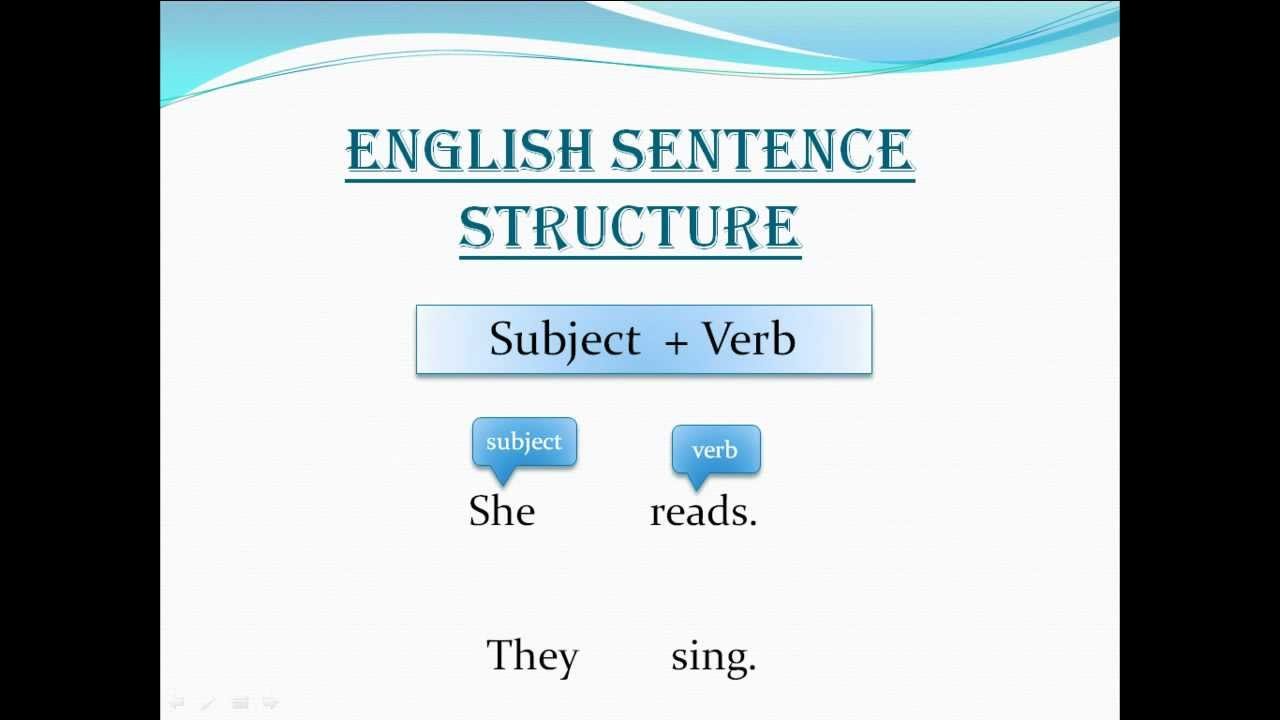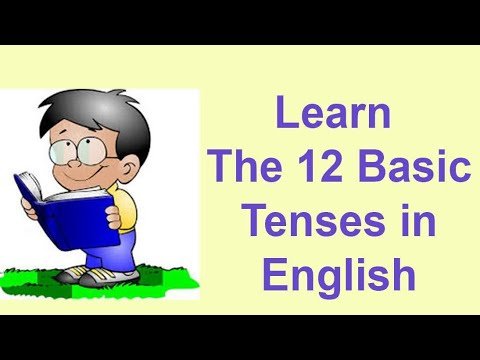
1.1 : Introduction
English can be a complicated language to learn.
Even native speakers often get confused about the various rules regarding proper sentence structure or when to use certain tenses. However, mastering the language as best you can is a great way to open doors in your career. It also helps you express yourself to others more clearly, increasing the chances that your messages are going to be understood.
This course reviews certain English basics that everyone should know.

1.2 : Sentence Structure
Each word in a sentence serves a very specific purpose within its structure.
Understanding the different sentence parts can help you put together grammatically correct sentences with ease.

Subject
The subject is what the sentence is about - and all sentences require one.
It is typically a noun, pronoun or noun phrase, such as “Audrey”, “they”, or “the orange cat”.
There are three types of subjects:
. A simple subject is a single word without any modifiers, like “Audrey”
. A complete subject is a simple subject along with all modifiers, like “Kat's poem about Patrick”
. A compound subject consists of multiple subject elements, like “Audrey and Paul”, or “Kat and her Mustang”
Predicate
The predicate includes a verb form and everything that follows it.
All sentences must have a predicate. Generally speaking, the predicate tells the reader what the subject is doing using an action verb, or describes the subject itself with a linking verb and a complement.
For example - “Audrey walked along Oxford Street”.
Audrey is the subject.
The action verb “walked” tells you what Audrey is doing, while “along Oxford Street” modifies the action verb by describing where it took place.
As with subjects, there are three different types of predicates:
. A simple predicate is the verb form alone, like “Audrey cried”
. A complete predicate is a verb and its modifier, as in our earlier example
. A compound predicate consists of two different verbs, like “Audrey ate her breakfast and admired the gems in the window”
Optional Elements
There are also several optional parts of a sentence:
Direct Objects
These are noun phrases included in the predicate like “Audrey ate the croissant”.
The direct object in this example is the item being consumed.
Indirect Objects
This is a noun phrase that includes a bit more information about a person or object, like “Audrey gave him the croissant”. Here, “him” is the indirect object, because “he” isn't the item purchased, but the person the item was purchased for.
Complement
These modify subjects by offering additional descriptions, like “Audrey seems smart”.
Modifiers
Words or phrases that add more information about a part of a sentence are modifiers.For example, in the sentence “Audrey wore a black dress”, the word “black” is the modifier.
Adverbial
When groups of words work together to modify a subject, they are collectively called an adverbial. For example, “Audrey went for a walk in the morning”.
1.3 : Tenses
In English, there are quite a few verb tenses:

Simple Present
Use this tense when you talk about events or actions that exist or are happening now, like “I walkeach day”, or “I play the ukulele”.
Present Continuous
Use this tense when talking about actions that are currently happening, actions that are unfinished, or actions that are temporary, such as:
1. I am walking along Oxford Street right now.
2. She is speaking with Paul at the moment.
Present Perfect
When an event began in the past and has continued to the current moment, use present perfect.
3. I have walked down this street 100 times.
4. She has spoken with Paul several times about that project.
Present Perfect Continuous
Use this tense to talk about something that started in the past and is still going on at this moment.
5. I have been walking to school since I was seven years old.
6. She has been biking to work lately.
Simple Past
Use this tense to describe an event that happened in the past.
7. Yesterday, I walked to work.
Past Continuous
Use this tense to talk about an action that started in the past, was interrupted by another event, or existed in the past.
8. I was eating dinner when Paul arrived.
9. In November, she was teaching at a school in France.
Past Perfect
Use this tense to ensure your reader knows that one event happened before another.
10. I had read “Pride and Prejudice” before I turned 12.
Past Perfect Continuous
Use this tense to talk about an action that both started and ended in the past.
11. I had been baking for many years before I had children.
12. She had been playing field hockey for 12 years when she was offered a position as a coach.
Simple Future
Use this tense to describe something that has not happened yet, but is likely to in the future.
13. I will walk to work tomorrow.
Future Continuous
Use this tense to talk about an ongoing action or an action that is expected to occur for a significant length of time in the future.
14. I will be building a new library for the city next week.
Future perfect
Use this tense to talk about actions that are expected to be completed in the near future.
15. I will have built three libraries by the end of next year.
Future Perfect Continuous
Use this tense to talk about actions that are going to continue until a pre-determined point in the future.
16. In April, she will have been working for the hospital for 10 years.